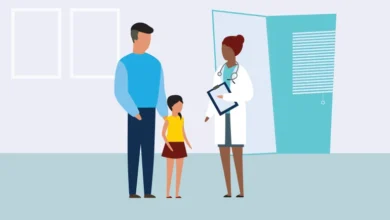Revolutionizing virtual reality medical training: Bridging the Gap Between Theory and Practice.

In healthcare, every decision can be a matter of life and death. Ensuring that medical professionals are well-trained and equipped with the necessary skills is paramount. Traditional medical education has relied heavily on textbooks, lectures, and hands-on experience through internships and residencies. However, these methods often need to improve in providing a comprehensive and immersive learning experience. This is where virtual reality (VR) steps in as a game-changer.
Virtual reality has made significant strides in various fields, from gaming and entertainment to architecture and engineering. It has emerged as a transformative force in medical training in recent years. This article explores how virtual reality medical training revolutionizes medical education and bridging the gap between theory and practice.
Immersive Learning Environments
One of the key advantages of virtual reality in medical training is its ability to create immersive learning environments. Traditional classroom settings and even hands-on training may only partially capture the complexity and pressure of real-life medical situations. VR allows medical students and professionals to step into virtual hospitals, clinics, and operating rooms, where they can practice diagnosing patients, performing surgeries, and responding to emergencies.
These immersive simulations offer a safe and controlled space for learners to make mistakes and learn from them without risking the lives of real patients. VR can replicate various medical scenarios, from routine check-ups to high-stress surgical procedures, providing invaluable experiential learning opportunities.
Enhanced Interactivity and Realism
Another significant advantage of VR in medical training is the level of interactivity and realism it offers. Medical trainees can manipulate virtual instruments, examine virtual patients, and even feel a sense of presence in the virtual medical world. This heightened sense of realism enhances the learning experience and helps build muscle memory and confidence.
For example, VR can simulate the sensation of holding surgical instruments, feeling tissue resistance, and observing the body’s response to different procedures. Trainees can practice delicate surgical techniques repeatedly until they achieve proficiency, which is challenging in a traditional setting.
Bridging Geographic and Resource Gaps
Medical education often faces challenges related to geographical constraints and resource limitations. Not all medical schools or hospitals have access to state-of-the-art facilities or the expertise required for specialized training. Virtual reality can bridge these gaps by providing access to a standardized, high-quality training experience, regardless of where a learner is.
Medical students and professionals worldwide can access the same VR simulations and collaborate in virtual medical teams, fostering a global community of healthcare learners. This democratization of medical education can raise healthcare quality globally and ensure that all practitioners receive consistent, high-level training.
Conclusion
Virtual reality is revolutionizing medical training by offering immersive learning environments, enhanced interactivity and realism, and the ability to bridge geographical and resource gaps. As technology advances, we expect VR to become an integral part of medical education, improving the skills and competence of healthcare professionals. With VR’s transformative power, we are not just preparing doctors and nurses for their careers; we are ensuring that they are better equipped to save lives and provide the best possible care to patients worldwide. In the not-so-distant future, virtual reality may become as indispensable to medical training as the stethoscope is to a physician.




